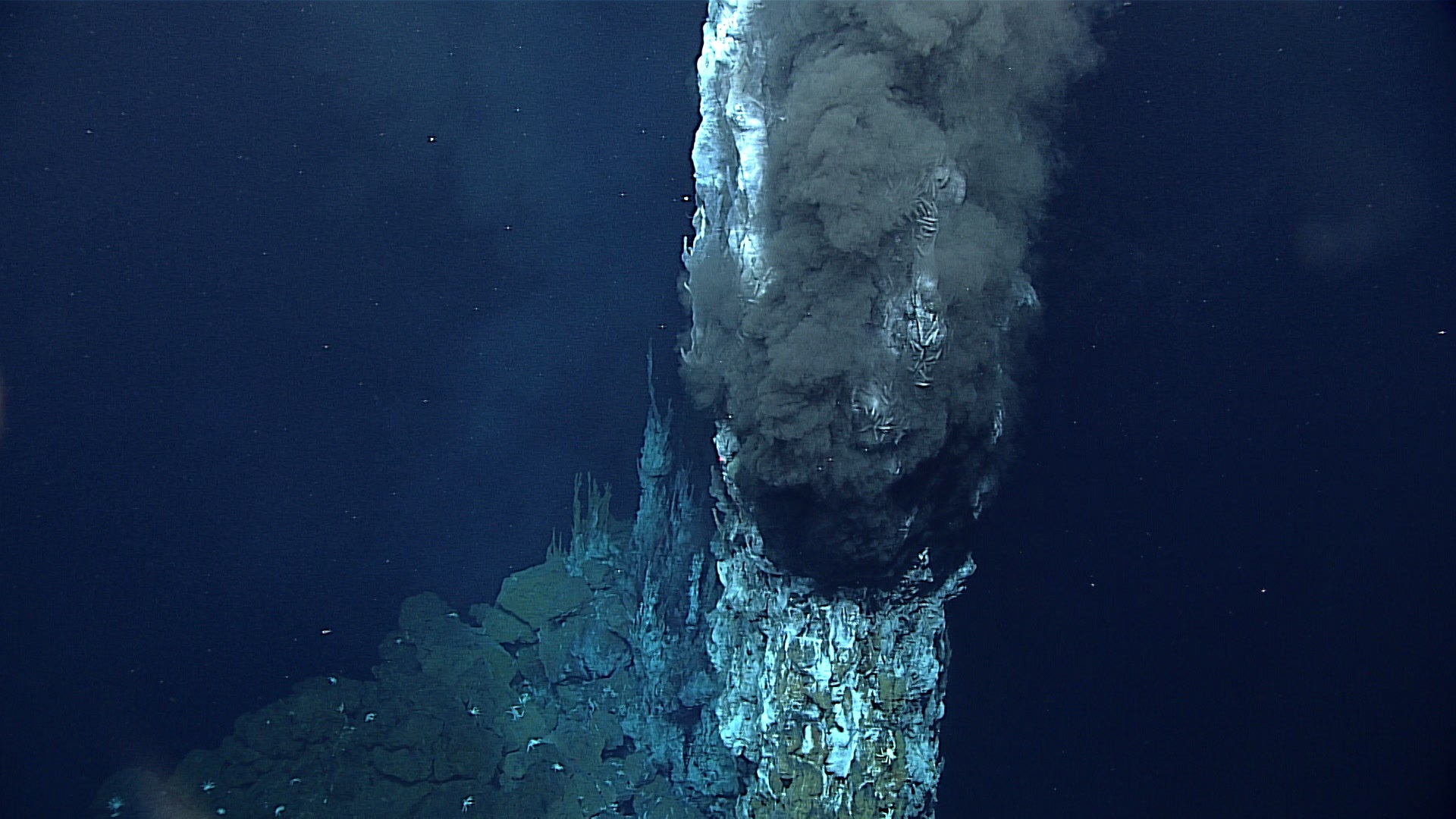
Microbial Exploration of Hydrothermal Features
Julie Huber (WHOI)
Photo by NOAA Ocean Exploration
Overview
The overarching goal of this work is to carry out a systematic seafloor exploration program on oceanic core complexes (OCCs) along the Mid-Atlantic Ridge to identify and characterize new sites of serpentinization and associated hydrothermal venting, and to link geologic setting to fluid chemistry, habitat conditions, and biological communities. Serpentinization is a common alteration process on Earth and likely throughout the solar system that can create habitable environments by providing a source of chemical energy for microbial life. On Earth, ultramafic rocks are the major component of the oceanic lithosphere, and the aqueous alteration of these rocks through serpentinization occurs from the depths of the ocean to the continental margins. The products of both serpentinization and carbon reduction are important energy sources for diverse microorganisms on Earth, and the process of serpentinization is thought to extend far into Earth’s history, potentially playing a role in the origins and early evolution of life.
The work leverages a Schmidt Ocean Institute (SOI) research cruise aboard the R/V Falkor(too) to be led by NOAA collaborators David Butterfield and Joseph Resing in February 2023. SOI will provide ship time, as well as the ROV SuBastian and a deep-diving mapping AUV. A nested exploration approach with a multidisciplinary team will be carried out, and multibeam bathymetry, CTD water column surveys, AUV high-resolution bathymetry and plume sensing, AUV-photography, and ROV surveys and sampling will be used to accomplish the mission.

